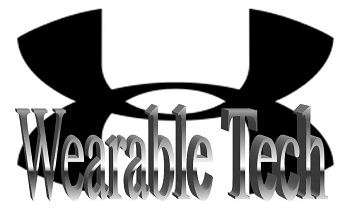The brand is creating a full lineup of wearables as well as digital apps as a part of their broader sports apparel strategy.
Under Armour is currently working on the creation of a full lineup of wearable technology products and complementary mobile apps that are to become a central component of their overall strategy to pass Nike Inc and to take the top global sports apparel spot.
This strategy was made more than clear last week at the Consumer Electronics Showcase (CES 2016).
At that event, Under Armour’s CEO and founder, Kevin Plank unveiled a number of new products that are headed into the brand’s series called “Connected Fitness.” Currently, Nike is holding the lead position in the global sportswear industry and that spot is considered to be quite a solid one. Last year, that brand reported over $30 billion in revenues, with $7.69 billion in sales having been generated exclusively within the most recent fiscal quarter.
However, when it comes to wearable technology, specifically, rivals such as Under Armour are stepping in.
 With a growing range of wearables in the form of high quality apparel and footwear, Under Armour is taking aim and is hoping to become a force to reckon with. It could be that this strategy may one day shake Nike’s stance on the top platform in the market.
With a growing range of wearables in the form of high quality apparel and footwear, Under Armour is taking aim and is hoping to become a force to reckon with. It could be that this strategy may one day shake Nike’s stance on the top platform in the market.
It doesn’t come a surprise that Under Armour feels that one of its top drivers in reaching its $7.5 billion sales target by 2018 is in the use of “Connected Fitness” and wearables. At the same time, many have found Under Armour’s speed of investment into this type of technology to be rather surprising. The reason is that it does leave the impression that the company has jumped from an idea in a business plan right into an actual series of products.
At the core of the brand’s wearable technology plan is the “UA HealthBox”, which includes a sports band upon which pretty much everything else is based. It tracks daily physical activity, heart rate and sleep. The HealthBox also includes a scale that is WiFi equipped and that reads both body weight and fat percentage.
Gartner has predicted that by 2018, about 50 percent of shoppers will use wearables or smartphones to pay for purchases.
Research firm, Gartner Inc., has released a recent prediction that wearable technology will play a tremendously larger role in mobile payments over the next few years, saying that half of all consumers will be using them or smartphones for that purpose by the close of 2018.
This forecast has come at a time in which mobile payments are still only just gaining initial adoption.
In markets such as Japan, North America and many countries throughout Western Europe, mobile payments remain a small but growing transaction technology. Gartner feels that by 2018, they will have become popular enough that fifty percent of consumers will be using their smartphones or wearable technology devices in order to complete transactions at checkout counters in retail stores and restaurants.
This also suggests that Gartner feels that wearable technology will also be growing in its popularity.
 According to Gartner principal research analyst, Amanda Sabia, “Innovation in apps, mobile devices and mobile services are impacting traditional business models, particularly in the way people use personal technology for productivity and pleasure.” Sabia also pointed out the importance that product managers come to understand who these shoppers actually are when it comes to catering to new devices and providing services, while discovering just how those gadgets are being used by those customers. “Knowing your customer is imperative in order to capture a fair share of spending opportunities in this dynamic marketplace.”
According to Gartner principal research analyst, Amanda Sabia, “Innovation in apps, mobile devices and mobile services are impacting traditional business models, particularly in the way people use personal technology for productivity and pleasure.” Sabia also pointed out the importance that product managers come to understand who these shoppers actually are when it comes to catering to new devices and providing services, while discovering just how those gadgets are being used by those customers. “Knowing your customer is imperative in order to capture a fair share of spending opportunities in this dynamic marketplace.”
There were three types of mobile payments that were described by Gartner within its recent report. It identified them as: wearables or smartphone based payments, branded mobile wallets from credit card issuers or banks, or branded mobile wallets from retailers.
Still, Gartner reported that those mobile payments services based on NFC technology – such as Android Pay, Apple Pay and Samsung Pay – will remain limited throughout the length of the forecast period simply because the partnerships between retailers and financial organizations for using smartphones and wearable technology in that way will not yet have been established. Moreover, consumers have yet to see the value in that type of payment transaction.
 With a growing range of wearables in the form of high quality apparel and footwear, Under Armour is taking aim and is hoping to become a force to reckon with. It could be that this strategy may one day shake Nike’s stance on the top platform in the market.
With a growing range of wearables in the form of high quality apparel and footwear, Under Armour is taking aim and is hoping to become a force to reckon with. It could be that this strategy may one day shake Nike’s stance on the top platform in the market.
 According to Gartner principal research analyst, Amanda Sabia, “Innovation in apps, mobile devices and mobile services are impacting traditional business models, particularly in the way people use personal technology for productivity and pleasure.” Sabia also pointed out the importance that product managers come to understand who these shoppers actually are when it comes to catering to new devices and providing services, while discovering just how those gadgets are being used by those customers. “Knowing your customer is imperative in order to capture a fair share of spending opportunities in this dynamic marketplace.”
According to Gartner principal research analyst, Amanda Sabia, “Innovation in apps, mobile devices and mobile services are impacting traditional business models, particularly in the way people use personal technology for productivity and pleasure.” Sabia also pointed out the importance that product managers come to understand who these shoppers actually are when it comes to catering to new devices and providing services, while discovering just how those gadgets are being used by those customers. “Knowing your customer is imperative in order to capture a fair share of spending opportunities in this dynamic marketplace.”